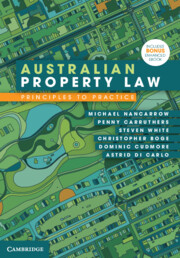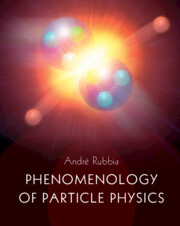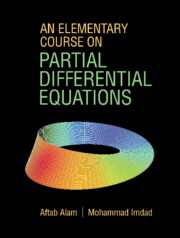Refine search
Actions for selected content:
36901 results in Cambridge Textbooks
12 - Looking Forward
-
- Book:
- Environmental Management
- Published online:
- 30 November 2022
- Print publication:
- 22 September 2022, pp 247-255
-
- Chapter
- Export citation
2 - Induction and Recursion
-
- Book:
- Modern Mathematical Logic
- Published online:
- 08 December 2022
- Print publication:
- 22 September 2022, pp 11-40
-
- Chapter
- Export citation
6 - Ethical Environmental Management and Communication
-
- Book:
- Environmental Management
- Published online:
- 30 November 2022
- Print publication:
- 22 September 2022, pp 120-149
-
- Chapter
- Export citation
4 - First-Order Logic: Languages and Structures
-
- Book:
- Modern Mathematical Logic
- Published online:
- 08 December 2022
- Print publication:
- 22 September 2022, pp 90-129
-
- Chapter
- Export citation
Figures and Map
-
- Book:
- Environmental Management
- Published online:
- 30 November 2022
- Print publication:
- 22 September 2022, pp xiii-xiii
-
- Chapter
- Export citation
Index
-
- Book:
- Environmental Management
- Published online:
- 30 November 2022
- Print publication:
- 22 September 2022, pp 323-326
-
- Chapter
- Export citation
8 - Managing for Compliance and Performance: “Driving between the Ditches”
-
- Book:
- Environmental Management
- Published online:
- 30 November 2022
- Print publication:
- 22 September 2022, pp 178-188
-
- Chapter
- Export citation
Reviews
-
- Book:
- Environmental Management
- Published online:
- 30 November 2022
- Print publication:
- 22 September 2022, pp ii-ii
-
- Chapter
- Export citation
7 - It Begins with a Plan: Strategic Planning and Diffusion of Innovations
-
- Book:
- Environmental Management
- Published online:
- 30 November 2022
- Print publication:
- 22 September 2022, pp 150-177
-
- Chapter
- Export citation
2 - Roles of the Environmental Manager in a Tri-sectoral World
-
- Book:
- Environmental Management
- Published online:
- 30 November 2022
- Print publication:
- 22 September 2022, pp 15-31
-
- Chapter
- Export citation
Reviews
-
- Book:
- Modern Mathematical Logic
- Published online:
- 08 December 2022
- Print publication:
- 22 September 2022, pp i-ii
-
- Chapter
- Export citation
References
-
- Book:
- Environmental Management
- Published online:
- 30 November 2022
- Print publication:
- 22 September 2022, pp 302-322
-
- Chapter
- Export citation

Australian Property Law
- Principles to Practice
-
- Published online:
- 19 September 2022
- Print publication:
- 30 September 2022
-
- Textbook
- Export citation

Phenomenology of Particle Physics
-
- Published online:
- 16 September 2022
- Print publication:
- 12 May 2022
-
- Textbook
- Export citation

India before Europe
-
- Published online:
- 15 September 2022
- Print publication:
- 08 September 2022
-
- Textbook
- Export citation

An Elementary Course on Partial Differential Equations
-
- Published online:
- 15 September 2022
- Print publication:
- 05 January 2023
-
- Textbook
- Export citation
Appendix G - Energy Eigenstates of the Hydrogen Atom
-
- Book:
- Modern Physics
- Published online:
- 09 September 2022
- Print publication:
- 15 September 2022, pp 719-721
-
- Chapter
- Export citation
Appendix F - Properties of Waves
-
- Book:
- Modern Physics
- Published online:
- 09 September 2022
- Print publication:
- 15 September 2022, pp 717-718
-
- Chapter
- Export citation
9 - Harmonic Oscillator
-
- Book:
- Quantum Mechanics
- Published online:
- 11 February 2023
- Print publication:
- 15 September 2022, pp 275-311
-
- Chapter
- Export citation
Index
-
- Book:
- Quantum Mechanics
- Published online:
- 11 February 2023
- Print publication:
- 15 September 2022, pp 553-570
-
- Chapter
- Export citation
